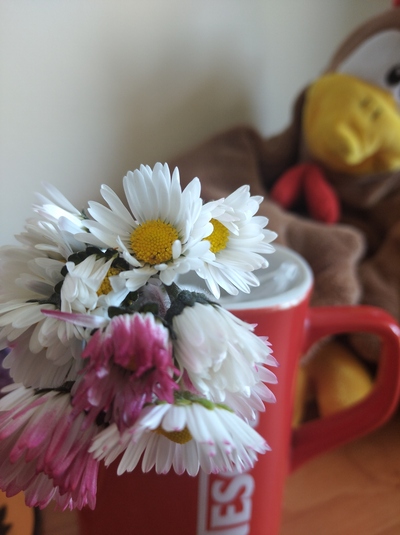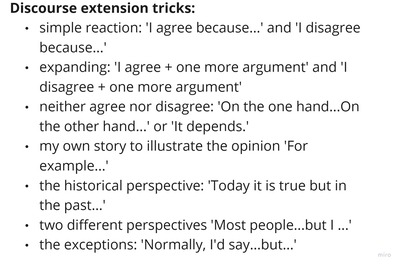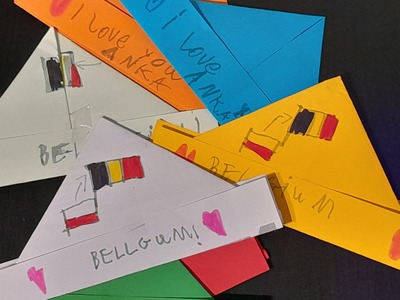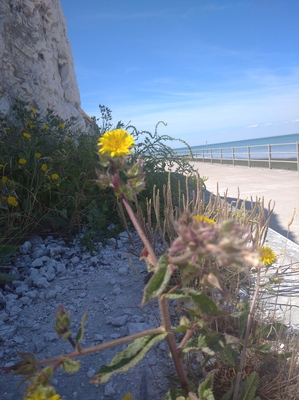
It happened way too many times…
Here is a situation that I witnessed many times during an observed lesson with young learners: a teacher and a group of kids start playing a game, for example riddles. The teacher models, then the kids take over. One student sits in front of everyone, chooses a card for the other students to guess or to identify. Kids start shouting out words, one of them gets it and the teacher takes the flashcard and hands it over to the student who shouted the correct word. The game goes on and it takes about three rounds more for one of the students to get offended / upset / angry / sad about not winning. More often or not, someone starts crying. Oups.
It is not only about losing, although, to be honest, this is a serious problem, too. Here, however, the ‘failure‘ of some kids is clearly visualised with a flashcard. Frequently, it is also very unfair because it is the faster and louder kids that get the point and these are not necessarily the kids who really know the answer. Also, there is another dilemma in a situation when two students shout out the correct answer at exactly the same point. Will the teacher tear the card into halves? No, of course not. Sigh.
That issue, frequent as it was, was always addressed during the feedback session and I am pretty sure every session on games for VYL and YL included the commandment compressed down to ‘Don’t use flashcards as reward points’. This was the bread and butter of a trainer / VYL ados.
My real shock to the system was an invitation to volunteer at Sheredar, our rehabilitation camp for children who went through serious diseases a few years back. I had a chance to go there a few times and teaching kids was an amazing experience. However, before I went, our contact and coordinator, Ksenia, said: ‘They will be one big mixed ability group but you can choose any topic you want. Actually, do whatever, just don’t play any competitive games. These kids have fought enough’. It took me about a minute to understand that I have no games to play. All my favourite activities, those that I frequently used in my lessons, with kids, juniors and teens, all of those favourite ones were competitive. ALL OF THEM.

Should kids even be playing competitive games?
I have been looking for sources on competition in the EFL classroom and I have found…nothing. I started to look around for any texts on kids and competition and it turns out that getting engaged in competitive activities such as sports, for example, can be very beneficial for children.
- competitive activities can be motivating and encourage kids to improve their skills
- playing and losing and winning helps children to learn how to deal with competition and with the fear of losing
- they are also an opportunity to learn how to deal with pressure and how to win and how to lose
- they are good for building self-confidence
- they teach kids about the existence of the rules that need to be obeyed
- they can help form friendships and relationships, with peers and adults
- and, also, even if they are sports, they can lead to improving academic performance in children
Although, of course, they can also have some drawbacks, such as too much pressure, negative feelings in children and for their self-esteem.
On the whole, competition is a good thing, although it is not a given that all the children take to it naturally. Some of them might struggle, which is natural, bearing in mind that not all the adults have learnt to deal with it successfully, and they should be given help and support.

EFL and competition
As regards our EFL classes, especially those with the younger learners, primary and pre-primary, it would be just reasonable not to abandon all the competitive games althogether but to keep an eye on the balance and on avoiding a situation when all the games and activities that comprise a lesson have promote competition. Apart from competition, there are the other beautiful C-words such as: cooperation, colaboration, cognitive skills development that can and should be the foundations for our classroom life.
Not to mention that everything that we do in our lessons, namely learning a language, is against the very idea of competition. All the kids learn for themselves and although they have the same linguistic aims, their overall results or results in certain areas of language learning do not depend on the results of the other participants. What is more, their progress is measured against their previous results and achievement, although, admittedly, the situation is slightly different when it comes to learning a langauge in the context of a state school where kids’ progress is graded at every step of the way.

Things to consider
The most important thing to remember seems to be the fact that we, as teachers, should not take things for granted and assume that all the kids in our group like competition and competitive activities and that all of them are equally prepared to win and lose with grace.
The other factor to take into consideration is the age of the students. The younger the students, the less likely it is that they have already had a chance to participate in those kind of activities and acquire these skills and that they have enough life experience to be mature about it. It is a combination of their age, cognitive and social development as well as life circumstances such as having a chance to attend kindergarten, playing at home with parents and relatives, having older siblings and so on.
Equally important is the bond between the students. A group of children starting to learn together in September is a completely from the same group in January or even in October, especially in the context of after school groups or afternoon language schools where children might land in a group of complete strangers with whom the only thing they have in common is the age and the level of English, not the family ties, the address or the school. The more they get to know each other, the more they bond, the easier it will be for the teacher to set up activities, including competitive games, and for the kids to handle ‘failure‘. After all, it is easier to lose and get over it when you play with friends.
What it comes down to in real life, with real children, is keeping an eye on the kids, checking how they react to different stimuli and then introducing some competitive games, carefully, step by step. However, with my youngest students, this non-competitive period may span over the entire length of the pre-school EFL. With the most recent group, we started to play only half-way through our third year together and even then it was the whole group vs the teacher (who always lost).

Every little helps
Here are some of the tricks and techniques that a teacher can use in the classroom while introducing competitive games or taming of the competitive games we often include in our lessons (tired and tested):
- Playing the familiar games such as riddles or pelmanism in a less competitive way. First of all, we do not award points for the boardrush OR we award points to both teams for competing the task, not only to the team who is faster (especially that with boardrush at least it is sometimes very tricky to establish who really was the first one to touch the board). Points here can be pluses or hearts on the board or flashcards given out to the winner in a particular round. Instead, we finish the round, the praise everyone and we simply move on. The game itself (the fun of participating, the language produced or used) is the reward itself.
- We do not determine the order of participation based on the successful participation, for example in riddles, when the student who guesses the word is the next one to play. Instead, all students take turns, one by one to make a riddle for the whole class, regardless of how good they are at guessing.
- Playing ‘Simon Says’ without excluding the losers by asking them to sit down after they make a mistake, especially that a growing number of non-participating students is very bad for the overall classroom and behaviour management. Or, in the same way, playing the Treasure Hunt without establishing who the winner is. We all look for clues around the classroom or the school, we all participate for ten minutes and in the end all check our answers, without counting the points or the number of the elements or stages completed.
- With pelmanism, instead of playing 1-1, with kids uncovering two cards at a time, the whole group can do it in pairs, with two kids always participating, ideally in different combinations. As soon as a pair is found, the teacher and the kids cheer for everyone, and the cards are put aside or given back to the teacher.
- Play the game in the format of the teacher vs the whole group, to create the support for the individual child. If they win or if they lose, they will do it together, with all their friends, nobody will be singled out. Ideally, in such a situation, the teacher loses and has a chance to model the mature behaviour and how ‘a failure’ can be handled, but, of course, bending the rules in order to ensure that might not always be easy to do. If you are looking for ideas, I would recommend pelmanism. It is very easy to get distracted and to forget (or ‘to forget’) where the other card from the pair is located.
- Any game can be played in teams, a team vs a team, instead of individuals competing with each other. This way, again, the support, the safety net or the safety blanket is created. Enjoying the victory or handing the loss is easier with your team. Even if there is one child who does not handle ‘the failure’ very well, there will be other children in this situation, too. They will serve as role models.
- Having the teacher participate, as one of the teams, can also help soften the blow of the defeat. Again, the teacher will be the one to model the langauge use, the game rules application and the player’s behaviour, too.
- If possible, talk to the parents whose children struggle with controlling their emotions while losing the game. If nothing else, it would be great to find out whether there have been any factors that could have played a part, whether the child reacts this way in other situations and to simply inform them what happened in class. Perhaps parents will be willing to discuss this topic at home, to reinforce what the teacher does at school and, perhaps, to also play games at home, to help the child tame that beast.
- In one of the posts (see bibliography), I found another great tip. What is necessary is a quick game that can be played a few times, in a quick succession, in the same lesson. Some of these will be won, some will be lost, but the quick pace and the repetition will make either of the results, the victory or the defeat, not so relevant anymore and easier to deal with and to even forget.
- Another approach that I have been using in some of my summer camp groups was the Points Poster that we used throughout the entire camp. It was very simple, only an A3 piece of paper, with the team’s name, displayed on the wall. Every time we played a competitive game, there were points, for example two or three stickers for the winners, a star for everyone else. All the kids took very well to it because winning the stickers was great but the joy lasted a brief moment only and very quickly the stickers won today would quickly get lost among all the other stickers won on all the other days. The defeat, on the other hand, was perhaps not the most pleasant thing in the world but it didn’t matter much because the students knew that they would be another game on the same or on the following day. What is more, because I was using some leftover stickers, of all kinds, sometimes it was more fun to choose one huge sticker for your team rather then three little ones…
- Finishing each game with the teacher and the kids thanking each other for the game, with a simple handshake and ‘Good game‘, just like all the football or volleyball players do at the end of the match.
- Any activity that can work towards bonding and building a community is also welcome
- If there is the students who struggle with dealing with their own emotions while playing games, I have so far tried two things. One of them was pairing this student up with myself, in 1-1 games, in order to be better able to model, to monitor and to help the child control their emotions during the game. I have also experimented with pairing up with this child in the games that we played in teams because, again, losing (or winning) in one team with the teacher was easier to deal with.

Non-competitive EFL games
First, an anecdote. The heading of this paragraph is what I put into my google. Would you like to guess what the amazing Uncle Google came up with? Nothing.
‘Fun games’ – yes, ‘no prep games’ – yes, ‘exciting games’ – yes, sure. There was one post from the British Council (see bibliography) but not many of them are appropriate for kids and not many are actual games. And one article about an activity that still has winners and losers…Nada, nada, nada.
Here are some suggestions from the non-competitive games that I have played
- Musical flashcards: a simple movement game, an adaptation of the musical chairs game, only without any kids dropping out. The teacher puts out all the relevant flashcards on the floor, kids move around with some music playing. When it stops, every child picks up a card and makes a sentence for example: I like bananas (topic: food), I haven’t got a cat (topic: food), I am wearing a blue t-shirt (topic: clothes) etc. Afterwards, the flashcards go back onto the floor, the teacher puts the music on for another round of the game.
- All the logical games such as Find the difference (for example those that we have in the YLE Movers and Flyers) or Odd one out (for example YLE Movers) that can be easily adapted to any topic. A similar activity will be also based on the silly picture scenes that I described in an earlier post here.
- I Spy: a variation of the game with a set of visuals such as a poster or an illustration from the coursebook. Kids work together as a group (in the early stages) or in pairs, they describe something in the picture, with the relevant sentences, depending on the age and level (I spy with my little eye something. It is big, it is green. It is next to the cat. etc). The student or the students who listen find the relevant object. This game is not competitive because there are no winners / losers and the game goes on until the child / children guess. As the game proceeds, the kids can offer more information and support to help their partner, for example the first letter / sound, the gestures etc.
- Riddles: the same principle and procedure as above but it can be played with flashcards or a set of word cards or a set of words prepared by the kids.
- Back to the board: it is a very popular game that can easily be played in a non-competitive way and this way it can go help build and develop a sense of community and give the whole group a chance to work together. One of the students sits on a chair in the centre, facing the group. The teacher writes a word or a simple sentence on the board and signals how many words it includes. The group work together to help the one student guess and recreate the word on the board. With the lower level kids, flashcards can be used instead of words although using simple sentences works wonders for the students to learn and to work better with the grammar, the sentence structure and, progressively, with the meta language.
- Monster game aka Hangman aka Let’s save the little human: I love playing Monster Game with the lower levels because it helps the students work with literacy, spelling and blending and we always play it as a whole group with all the students contributing and working together to guess the letters and the words and to help the little human who is slowly losing parts of the ladder, the boat or the hotair balloon. To make the game less cruel, the element of getting points can be added (i.e. when the kids guess a part of the word or when they guess the most common letter or when they get all the vowels etc) and with my summer camp group the game finished with the kids drawing some food for the hungry monster because they developed empathy for someone hungry, even though it was a monster.
- Telephone: this game is a variation of something known as ‘Whispers’, with the whole group sitting together and passing a word or a simple phrase, from the end to the beginning of the chain. This is not a very generative game or a very communicative one but it helps the kids work together towards one goal and it is easy enough even for the youngest kids.
- Stations in the classroom: this is not really an activity but a format of completing tasks with kids. The teacher sets up a few stations in the classrom, for example in the four corners of the room. Kids move from one station to the other and complete the task such as unscrambling words, completing a simple handout, matching words and pictures, playing a round of pelmanims and many more. Kids complete a few tasks during the lesson and their job is done when they complete a full circle but they do not compete with everyone else in the group. It is up to the teacher to decide when then task is done and they can move on and in this way, even the ‘weaker’ students can play and participate without any pressure from the group.
- Community building games: on of the 30 Creative Team Building Activities. I haven’t tried these yet but these definitely caught my eye: Cross the Line (22), Paper Chain Race (30), Shrinking Classroom (18), Building a tower (6 and 10). Or 22 Fun Team Building Games and Activities for Kids. Here I really liked: Forehead Dots (4), Some of them have the ‘choose the best / fastest team’ element which works to some extent as it helps the kids to bond within their team but I would still skip this element altogether.
- Last but not least, among the things that has been on my wishlist of the things to try out in the classroom is the parachute and all the parachute games. Some ideas can be found here.

Coda
But, perhaps, the situation is a little bit better than it seems. While working on this post, I asked my audience on the social media about their opinion and I was very happy to find that those who responded use a mix of competitive and non-competitive games. At the same time, the teachers admitted that they have to deal with the competition-related stress in the EFL classroom, although not all the time and ‘some games, some days, some kids’ was the most popular answer.
What about you, dear reader? Do you play any non-competitive games with your YL students?
Happy teaching!

Bibliography
Teaching children to lose gracefully so they can lose with dignity as adults (oregonstate.edu)
Pros and Cons of Competition Among Kids and Teens (verywellfamily.com)
The pros and cons of competition | BabyCenter
How To Teach Children To Cope With Losing | Casa de Corazón (casaearlylearning.com)
6 Tips for Teaching Children How to Lose — Better Kids
Six collaborative games for competitive English language classrooms | British Council
Problems with Games in ESL/EFL Classrooms (and Solutions) – BINGOBONGO (bingobongokids.com)
















